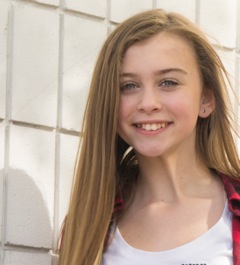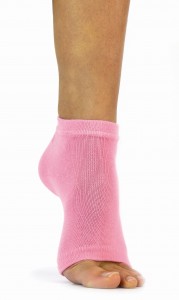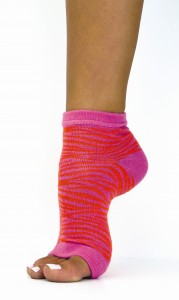
He looks over at me with that twinkle in his eyes, and I see the mischievous 7-year-old boy gleam through my husband’s 32-year-old self.
“Come on babe… just do it. Just show them your feet… please?” and turning toward his friends – okay more like acquaintances… practical strangers to me – he proudly says, “You guys have gotta see these things…”
I shoot a half glance-half glare back at him and he knows exactly my train of thought. But how can I be mad at him when he’s looking at me like that? When he’s so proud of them for me? How can I really be that embarrassed by my “worker tools,” as he puts it? After all, that is what they are, callouses and all… And it could be worse… He could ask me to put my leg over my head, or have them guess my weight.
I meekly slip off my loafers and hesitantly raise my gaze to meet their slightly horrified faces.

“Um…. Wow. Aghh… Yeah. So do they hurt? Because they look like they hurt.”
That’s the typical reaction I get whenever pedestrians (non-dancers, that is) see my very ugly ballerina feet – and they are very ugly. Our physical therapist, Boyd Bender, actually keeps a photo of them on his iPhone to show any of his clients who might feel self-conscious about their own toes…
And ever since Center Stage and that scene where Jody Sawyer takes off her pointe shoes to show a very bloody blister (you know the one…), it has been a point of fascination – pun slightly intended.
The funny thing, I find, is what we consider “pretty feet” in the dance world has nothing to do with how pristine they look in flip-flops… That’s relatively easy to accomplish: buff down those callouses and shellac a bit of red nail polish and voila! You’re good to go… ish.
There’s only so much you can do for those bunions…
The hard part is getting those feet to look pretty in pointe shoes… harder still to get the pointe shoe to cooperate with you. To conjure the effect of weightless, effortless floating; balancing or turning on a dime – these are hallmarks of ballet and yet not easy feats by any means. I can’t always blame every problem I have on the shoes, but sometimes they really do have a mind of their own!
Well after 19 years of wearing these mini instruments of torture I’ve learned a few tricks to making them work for me, instead of the other way around… [Read more…]













